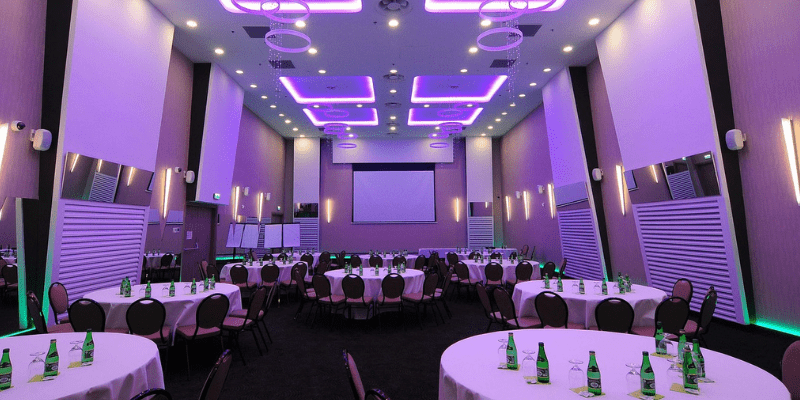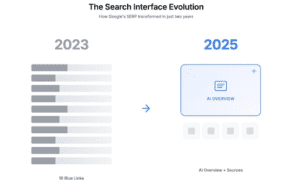Are you seeking a novel dining encounter? Do you yearn for a revolution that can infuse your restaurant visits with greater excitement, efficiency, and memorability? Look no further, as technology is poised to redefine your experience! In this article, we will delve into the captivating intersection of cutting-edge innovations and gastronomic delights. Prepare to uncover the way technology is reshaping the dining journey and fundamentally altering restaurant operations. Embark on a delectable voyage that includes intelligent menus, virtual servers, interactive encounters, and much more.
Exploring the Evolution of Restaurant Operations Through Technological Advancements
In an era where technology has transformed numerous industries, the restaurant sector has been relatively slower to adapt. Nevertheless, recent times have witnessed an increasing trend of restaurants harnessing technology to enhance both operations and the dining experience. Here’s a glimpse into the myriad ways technology is influencing restaurant operations:
Seamless Online Ordering and Reservations: Patrons can now conveniently place food orders online or reserve tables through a restaurant’s website or mobile application. This convenience not only saves time for customers but also assists eateries in managing seating arrangements and kitchen activities more effectively.
Dynamic Digital Menu Boards: Digital menu boards are gaining popularity as they offer an interactive and engaging dining experience. These boards can be updated in real-time to reflect changes in specials, prices, and even provide nutritional information for patrons with dietary constraints.
Empowering Tabletop Tablets: Restaurants are integrating tabletop tablets to expedite the ordering process. Customers can peruse the menu, place orders, and even settle bills directly through the tablet. This eliminates the need for constant interaction with waitstaff and minimizes ordering inaccuracies.
Streamlined Self-Service Kiosks: Self-service kiosks are becoming a preferred choice for customers, especially in quick-service restaurants. Customers can place orders at kiosks and retrieve their orders when ready, bypassing the need to stand in lines or engage with waitstaff.
Precision through Kitchen Automation: Automation technology in the kitchen is enhancing accuracy and speeding up food preparation. This technology also aids in inventory management and simplifying order procedures.
Deciphering the Essence of Restaurant Technology
In the ever-evolving landscape of the restaurant industry, technology plays a pivotal role in shaping trends. Restaurant technology encompasses a spectrum of tools and systems that enhance or streamline operational efficiency, ranging from point-of-sale (POS) systems to online ordering platforms.
Among these, POS systems are paramount, streamlining transactions, inventory tracking, and employee scheduling. Online ordering platforms have also gained traction, providing customers with the convenience of placing orders online, a boon for busy eateries.
The influence of technology extends to marketing strategies as well. Platforms like Facebook and Instagram have emerged as vital tools for promoting events and attracting new clientele. Additionally, the surge in mobile devices enables restaurants to engage potential customers through text messages and push notifications.
The Positive Impacts of Integrating Technology in Restaurants
In a competitive landscape, restaurants feel the pressure to align with evolving technological trends. As consumer expectations escalate, eateries are embracing technology to streamline operations, foster customer engagement, and heighten the overall dining experience.
Although some may hesitate to embrace change, the advantages of incorporating technology into restaurants are manifold:
• Enhanced Efficiency and Optimal Operations: Technology streamlines backend processes and bolsters frontend productivity. Kitchen display systems expedite order preparation, while mobile POS systems hasten payment processing.
• Enriched Guest Engagement and Loyalty: Personalized dining experiences emerge through technology. Guest management systems capture preferences, enabling tailored recommendations. Loyalty programs utilizing mobile apps keep customers engaged beyond their visits.
• Amplified Sales and Marketing Endeavors: Technology propels sales and encourages repeat business. Online ordering platforms facilitate convenient ordering, while reservation systems simplify table bookings. Coupled with CRM and marketing automation, restaurants can directly promote specials to customers.
• Augmented Profitability: Leveraging technology minimizes costs. Inventory management systems prevent wastage by tracking stock levels, ensuring optimal resource allocation.
Navigating Challenges and Potential Pitfalls in Technology Implementation
Undoubtedly, technology has reshaped how restaurants function, from ordering to inventory management. Alongside its benefits, technology presents challenges and pitfalls to consider.
Staying abreast of trends is a challenge, given technology’s rapid evolution. Restaurants must continually assess new technologies to determine their value.
Meeting customer expectations poses another hurdle. While online ordering and delivery are prevalent, ensuring a seamless process can be complex. Poorly executed online ordering systems can frustrate customers and result in lost business.
Security is paramount, given the risk of data breaches as restaurants digitize information. Ensuring robust security measures safeguards customer data.
Despite challenges, technology’s impact on the industry is positive. Thoughtful implementation of technology can enhance operations and elevate customer experiences.
Illustrating Instances of Technology Integration in Restaurants
Technology’s influence on restaurants extends to both customer experiences and operational aspects. Notable examples include:
Effortless Online Ordering and Reservations: Patrons place orders and reservations online, optimizing inventory and staffing management.
Mobile Apps for a Seamless Experience: Restaurants develop apps for menu viewing, reservations, ordering, and payment via smartphones.
Streamlined Self-Service Kiosks: Fast food establishments feature kiosks for efficient order placement, reducing wait times and labor costs.
Interactive Tabletop Tablets: Sit-down restaurants embrace tabletop tablets for menu viewing, ordering, and payment, minimizing waiter interactions.
Navigational GPS Tracking: GPS tracking aids in traffic management and service enhancement, enabling personalized service.
Embarking on the Journey of Technological Integration in Restaurants
In an increasingly competitive sector, restaurant operators seek methods to optimize operations and enhance customer experiences. Embracing technology solutions is a promising path.
A plethora of technology solutions exists for restaurants, such as POS systems, online ordering platforms, CRM software, and kitchen management systems.
Each restaurant should select solutions tailored to its unique needs and objectives. Compatibility with existing systems and rigorous performance monitoring are essential post-implementation.
Conclusion
Technology has revolutionized dining for both patrons and restaurateurs. Restaurants that employ technology to improve efficiency and provide a personalized dining experience stand to gain the most. Online ordering, mobile apps, automated kiosks, and other innovations amalgamate to offer a modern, enjoyable dining adventure.

































